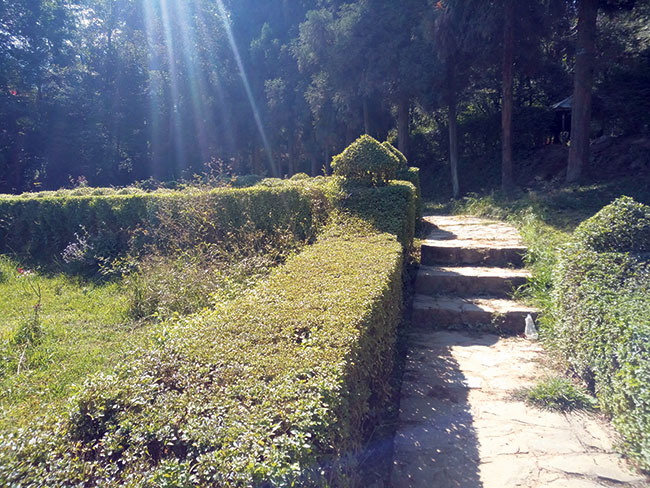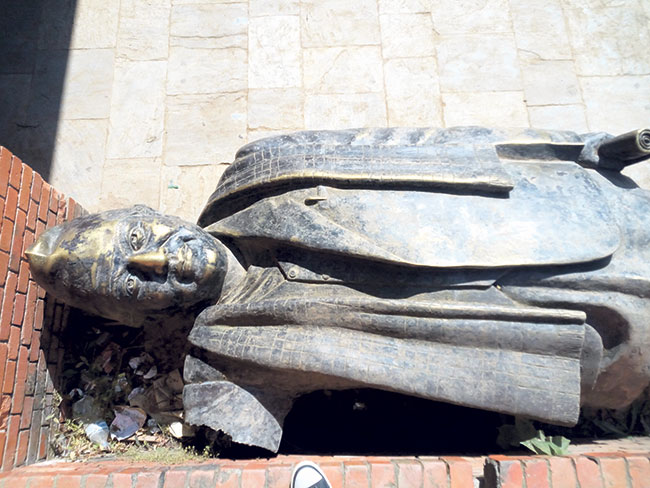KATHMANDU, Nov 13: The capital city of a country exercises a primary status as it seats the central government and drives the entire nation. Hence, it is vital for the capital of any country to look and feel developed in comparison to other parts of the territory.
Despite big promises by politicians, new as well as old, to develop Kathmandu as a metro city, the capital city of our country lacks even the basic amenities. Public parks and other open spaces serve as a cool breath of air for any city that is a concrete jungle, especially in case of Kathmandu.
Let’s take Hyde Park of London for example. The Park offers both world-class events and concerts together with plenty of quiet places for the public to relax and unwind. From boating, playing tennis, horse riding to jogging and cycling, people of Central London can enjoy the open air at the park while being engaged in various activities.
Though there are several such parks inside the Kathmandu Valley, they are left uncared. It is not that Kathmandu does not have attractive parks, but we lack innovation and the sheer concern for maintenance. Imagine strolling around a park in the middle of the busy city to forget about life’s hustle and bustle. Of course most of us want a Central Park of our own, but we already have Garden of Dreams. However, negligence in maintenance has led many such parks to deteriorate.
According to the data at Department Of Environment, there are around 30 open spaces inside Kathmandu Metropolitan City. Three of them--Ratna Park, Shankha Park and Balaju Park -- are well managed while other four small parks are under maintenance, said Rabin Maan Shrestha, head of department at the Department of Environment.
Park administration and security personnel directed to strength...

Spokesperson of Kathmandu Metropolitan City Ganendra Karki said, “We don’t have an accurate data of the numbers of open spaces inside Kathmandu, but we know that they are in huge numbers. Two years ago, we had planned to build a well-organized park in each ward. A budget was also allocated for the same in fiscal year 2073/74 BS. But the project could not see the light of day due to the lack of land.”
As per the basic rules for a municipality, it is mandatory that there is at least one open space in each community. But it is not the scenario in Kathmandu. Karki said, “Only old parks like Shankha Park, Ratna Park and Mitra Park, among others are in good condition.”
 Tribhuwan Park is one such old public park that was established by late King Birendra Bir Bikram Shah as an ode to his grandfather Tribhuwan in 2029 BS. The Park is situated in the south west corner of Kathmandu, which is quite far from the crowded mainland. Hence, the place is perfect for people who want get away from the hustle and bustle of the city and enjoy nature.
Tribhuwan Park is one such old public park that was established by late King Birendra Bir Bikram Shah as an ode to his grandfather Tribhuwan in 2029 BS. The Park is situated in the south west corner of Kathmandu, which is quite far from the crowded mainland. Hence, the place is perfect for people who want get away from the hustle and bustle of the city and enjoy nature.
The entrance fee of this park is Rs 30 per person and Rs 20 for students. The park also collects fees under several headings such as Rs 1,500 to Rs 2,000 for picnic, Rs 300 for renting video camera, Rs 1,500 for shooting and Rs 6,500 for hosting parties inside the park premises.
This park also features various attractions such as games, playground and pond, and is an attraction among people of all ages. The Park once used to be the biggest picnic and dating spot in Kathmandu, but fewer people visit the park at present after the establishment of Chandagiri Cable Car.
Rise in traffic jams due to the construction of an underground subway in Kalanki has also resulted in the decreased footfall at the Park, said Riza Sharma, owner of Riza Kirana Cold Store in Kalanki. Swarswati Dulal, owner of the only shop inside the Park, attributed negligence of workers and gardeners, dirt, ignorance on the part of administrations concerned and establishment of Chandragiri Cable Car as the main reasons behind the decreasing number of visitors at the Park.
The park is open for local people from its north-west corner. But local people enter the park through the entrance without buying tickets, while street animals also get through. Park In-charge Pramod Lal Shrestha said, “This is an old road of the locals here, so we can’t close the way.”
As many as 18 staffers are employed in this Park and they are responsible for the area’s security as well as cleanliness. However, since the Park is open for local people, it is difficult for the staffers to control the locals. “We have even approached the police for security during night time,” said Shrestha.
Karuna Gopali, a local resident, said “There is a tap inside the park, so I used to visit the Park daily for my household chores like washing clothes and to fetch drinking water. I am 38 years old and this Park was opened for public when I was a child. But I have seen the Park get quite dangerous of late because of the repeated suicides cases.”
 “We are unable to renovate the statue of late King Tribhuwan at the Park due to the lack of budget,” said Shrestha.
“We are unable to renovate the statue of late King Tribhuwan at the Park due to the lack of budget,” said Shrestha.
Public parks are not only vital to escape the dirty reality of city life, but also play a significant role during times of natural disasters. We must not forget that open spaces as well as parks like Tundikhel, Bhrikutimandap and Ratna Park were the go-to destinations at a time when the entire capital city was rattled by the devastating earthquake of 2015 and its aftershocks. So, we should not just rely on the government to maintain such parks but put our best foot forward in conserving nature as a whole.



































